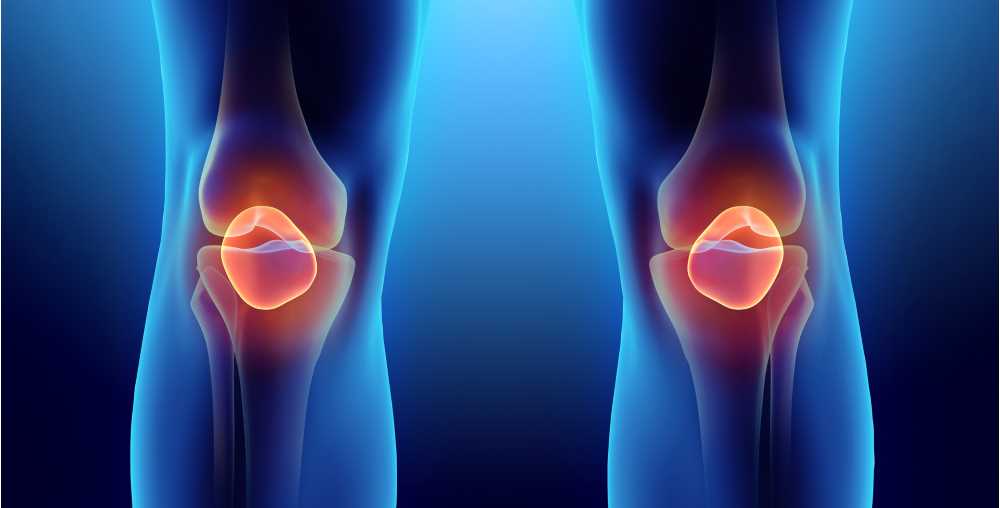Posted 8:52 a.m. Wednesday, Feb. 19, 2025

UWL researchers highlight simple, non-surgical approaches that can reduce knee pain
Simple, non-surgical strategies can be used to help reduce knee joint stress in osteoarthritis (OA), a common joint disease that affects the cartilage cushioning the ends of bones in joints, according to a broad review of osteoarthritis literature with insights from UW-La Crosse researchers.
Published in “Critical Reviews™ in Physical and Rehabilitation Medicine” this review study led by Steni Sackiriyas, PT, DSc., and Thomas Kernozek, Ph.D., from UW-La Crosse, highlights key interventions such as gait retraining, exercise, specialized footwear, and real-time feedback technology that can help individuals with knee OA manage their condition and potentially delay surgery.
Knee OA often progresses due to excessive stress on the inner (medial) part of the knee joint, leading to pain, stiffness and difficulty walking. The review synthesizes current research on how reducing this stress — also known as medial joint load — can slow disease progression and improve function.
What to do for knee pain
The study highlights a variety of scientifically-supported interventions that can help individuals with OA, potentially providing an alternative path to delay knee surgery including:
- Footwear modifications: Wearing laterally-wedged insoles and supportive shoes can shift pressure away from the inner knee, reducing strain on the joint.
- Knee braces and walking aids: Knee braces and using a cane (holding it on the opposite side of the affected knee) have been shown to decrease knee joint stress in the ranges of 10% to 32%.
- Gait modifications: Small changes in walking patterns — such as widening step width, increasing lateral trunk sway, or adopting a ‘toe-in’ gait — can reduce knee stress by 4% to 50%.
- Exercise-based interventions: Strengthening key muscle groups like the quadriceps, hip abductors, and glutes can help stabilize the knee and lessen the force on the joint (a decrease of knee stress by 24%).
- Real-time biofeedback training: Emerging technology using motion sensors and visual feedback can train individuals to walk in a way that reduces harmful joint loading (about 20% reduction).
What this means for people with knee osteoarthritis
“Many people believe that knee osteoarthritis is an inevitable path to surgery, but our research highlights that modifying walking patterns, using supportive devices, and strengthening key muscles can significantly reduce joint stress,” says Sackiriyas, an assistant professor of Physical Therapy. “These interventions provide hope for those looking to maintain mobility and independence.”
While a 4% reduction may seem low, studies have reported that even a 1% increase in knee adduction moment (side bending force at the knee) can increase the risk of OA progression by six times, notes Sackiriyas.
“I think it is crucial to understand that modifying the load going through the joint — even if the reduction is by 1% — may help individuals with OA. This is especially important at a time when we do not have a ‘complete cure’ that can reverse the articular damage in osteoarthritis at this time,” says Sackiriyas.
The review emphasizes that these non-invasive strategies can be effective in managing knee OA without immediately resorting to pain medications or surgery. It also calls for more research on long-term effectiveness, particularly regarding biofeedback gait retraining and its potential impact on knee cartilage health.
"We want people, especially those with osteoarthritis, to understand that simple changes — like adjusting certain aspects of their gait —can help alleviate knee pain. Our study outlines several strategies that can help reduce discomfort while walking,” say Kernozek, UWL professor of Health Professions and the study’s co-author.
For more information:
“A Narrative Review on the Current Insights and Future Directions for the Reduction of Medial Joint Load in Walking Associated with Osteoarthritis,” is available in Critical Reviews™ in Physical and Rehabilitation Medicine. Read the full study.
The information provided in this article is for educational purposes only and is not a substitute for professional medical advice. Consult with a medical professional or healthcare provider for medical advice, diagnoses, or treatment.
